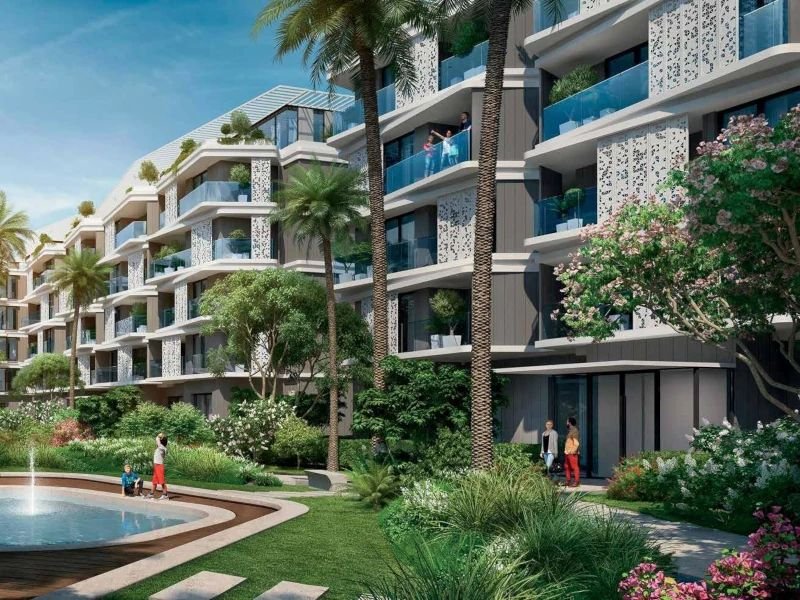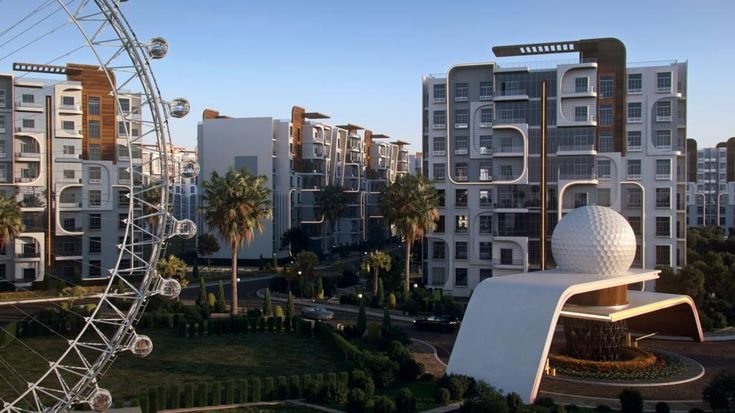Introduction: The State of Egypt’s Real Estate Market in 2025
The real estate market in Egypt in 2025 has reached a stage of relative maturity and stability after years of fluctuations and economic challenges that affected both investors and developers alike.
At the start of the year, strong indicators appeared signaling the market’s recovery, thanks to a series of government measures aimed at supporting the construction and building sector, facilitating mortgage financing, and gradually restoring confidence in the local market.
One of the most notable developments shaping the real estate landscape this year has been the rise in interest rates and the liberalization of the exchange rate — two factors that have had a dual impact.
On one hand, they increased financing and construction costs, leading to higher prices for new units.
On the other hand, they made real estate a safe haven for investors seeking assets that preserve their value amid inflation and currency depreciation.
In terms of prices, the average cost per square meter in Greater Cairo rose between 12% and 18% during the first half of 2025.
Some areas in the New Administrative Capital and New Alamein City even saw increases exceeding 20% due to rising demand and limited supply in the early development stages.
Meanwhile, older districts and popular neighborhoods experienced more moderate price growth, mainly due to lower consumer purchasing power.
The market is also witnessing a shift in buyer behavior — the focus is no longer just on size or price, but increasingly on location, finishing quality, and the availability of essential and recreational services.
There has been a growing preference for integrated communities and compounds offering safe environments, smart services, and flexible payment systems, making them the top choice for young families and investors seeking strong rental returns.
Another major factor driving the market in 2025 is the influence of Egyptians working abroad.
According to Central Bank data, their annual remittances exceeded $35 billion, with a significant portion directed toward property purchases — either as long-term investments or future family homes.
Developers have recognized this trend and started offering special deals and dollar-based payment plans to attract this segment, boosting foreign demand for both luxury and mid-range units.
Developers have also become more strategic in diversifying their portfolios — offering smaller, affordable residential units alongside high-end villas in new cities to meet the needs of all market segments.
Some have turned to innovation in design and amenities, introducing solar energy solutions and smart home systems to reduce operational costs and enhance quality of life within compounds.
Overall, real estate prices in Egypt in 2025 are following a pattern of gradual upward stability — a steady, calculated increase driven by genuine supply-and-demand dynamics rather than speculative activity.
This makes the Egyptian real estate market one of the safest and most profitable in the region, especially as the government continues implementing its urban expansion plan through fourth-generation cities such as the New Administrative Capital, New Alamein, and New Mansoura.
Factors Influencing Real Estate Prices in Egypt 2025
Real estate prices in Egypt are shaped by several interconnected economic and investment factors that determine whether the market moves toward growth or stability.
In 2025 specifically, several key factors emerged that explain price movements across both new cities and traditional areas within Greater Cairo.
1. Inflation and Rising Construction Costs
Inflation remains the most influential factor affecting real estate prices in Egypt in 2025.
The sharp increase in the prices of construction materials — such as steel, cement, and paint — has directly raised the cost of new developments.
For every 10% rise in raw material costs, the average cost per square meter increases by about 5–7%, directly impacting the final selling price to consumers.
Despite government efforts to stabilize the market and promote local production, global price volatility continues to make cost control a real challenge.
Experts expect the Egyptian market to see a further increase of 10–15% during 2025, particularly in high-demand areas such as the New Administrative Capital and New Alamein City.
2. Exchange Rate Movements and Their Market Impact
The exchange rate is one of the most sensitive factors in Egypt’s 2025 real estate market.
As the U.S. dollar rises against the Egyptian pound, import costs increase, leading to higher prices for materials and contractor wages.
However, this same factor also encourages many investors to convert their foreign currency savings into real estate, viewing property as a stable asset that retains value amid currency fluctuations.
This behavior has driven repeated waves of property purchases from Egyptians abroad and local investors seeking protection from inflation — fueling demand and gradual price appreciation.
Developers have capitalized on this momentum by offering flexible dollar-based payment plans or fixed-price offers for limited periods to attract more clients.
3. Growing Demand from Egyptians Abroad
Egyptians working abroad play an increasingly vital role in supporting the real estate market.
They represent a significant share of buyers — whether purchasing homes for their return to Egypt or for long-term investment purposes.
Their annual remittances total around $35 billion, and a large portion is directed toward property purchases in new cities such as the New Administrative Capital, Fifth Settlement, and New Alamein.
Many expatriates view Egyptian real estate as a stable and safe investment, offering better long-term returns than other options — especially amid local currency devaluation.
Developers have responded by tailoring unit types and installment plans specifically for expatriates, which has strengthened demand for both luxury and mid-range housing segments.
4. Expansion of New Cities
The ongoing expansion of new urban developments — such as the New Administrative Capital, New Alamein, New Mansoura, and 6th of October Gardens — remains one of the most important forces reshaping Egypt’s real estate market in 2025.
The government continues to execute a massive urban development plan aimed at increasing residential space and reducing pressure on Greater Cairo.
These cities offer not only housing but also integrated lifestyles with business districts, universities, schools, and world-class hospitals.
As a result, investor and buyer interest has shifted significantly toward these new urban centers, driving up land and property values by 15–25% in just one year.
Flexible ownership systems and varied payment options have also encouraged broader participation — from young buyers seeking their first homes to investors looking for high rental yields.




